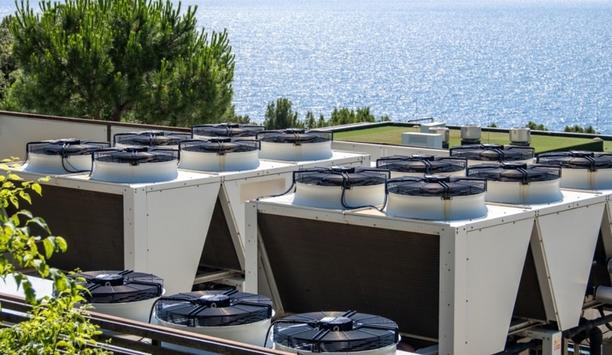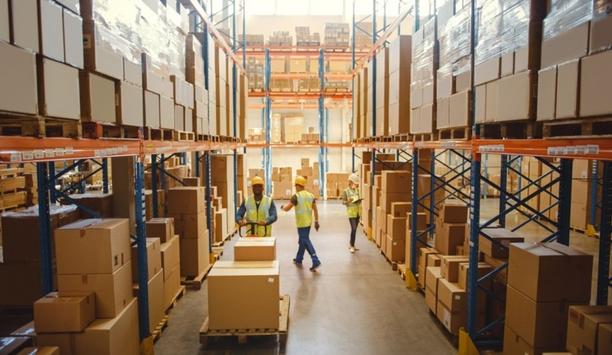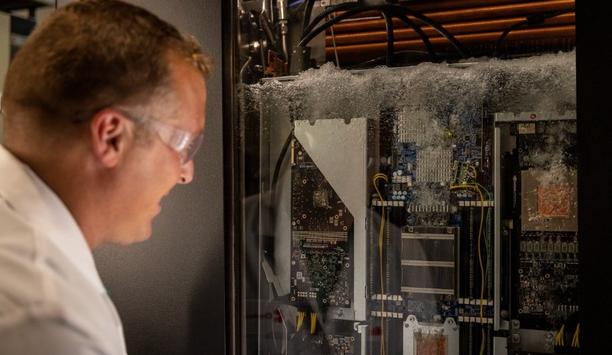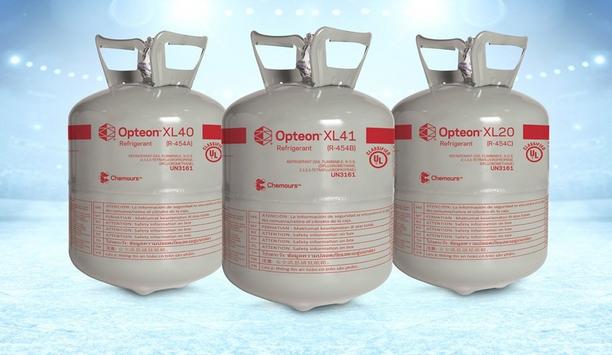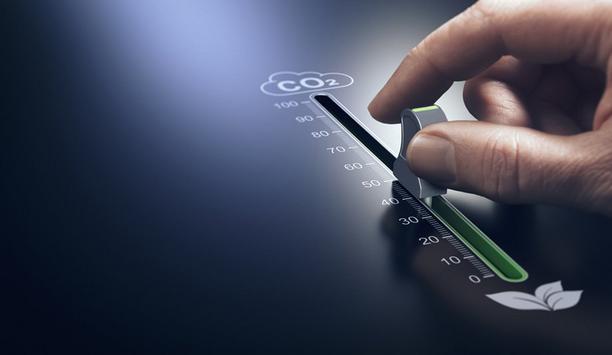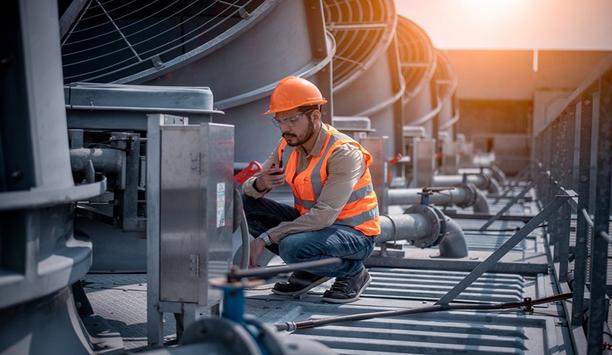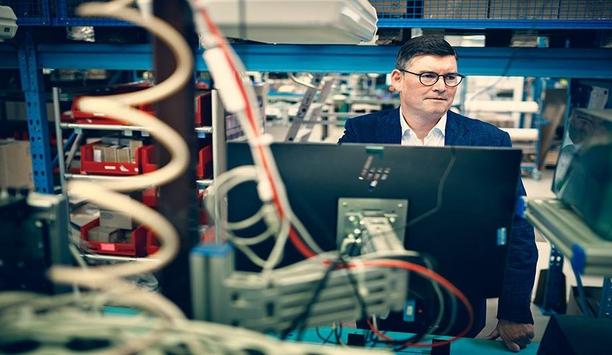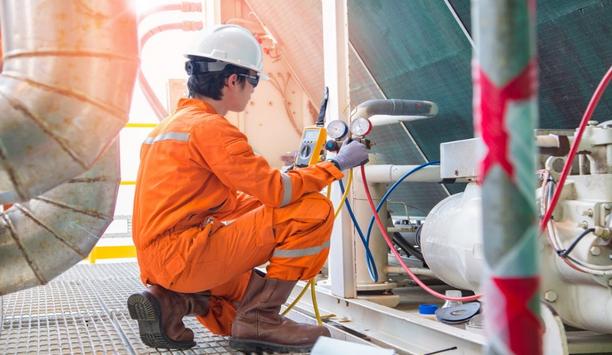Safety standards - Expert Commentary
As environmental regulations become increasingly stringent, the HVAC/R industry is turning to sustainable refrigerants to minimize environmental impact. A3 refrigerants—flammable gases with low global warming potential (GWP)—are emerging as a preferred choice. However, their adoption introduces additional regulatory requirements. EPA regulations To address these challenges, the industry is leveraging innovative solutions like enhanced small-diameter copper tubes, which enable com...
For warehouse and factory owners, cutting their heat energy bills by over 90% might seem like a pipedream. I’ve been in enough warehouses to know one thing: heating them is expensive and frustrating. It often feels like throwing money into the wind. However, times are changing, and with the introduction of Shortwave Infrared (SWI), a revolutionary technology set to redefine warehouse heating, business owners can finally achieve energy savings on the scale they need. Shortwave Infra...
Data centers worldwide are under intense pressure. High-powered computing is a global necessity that seemingly gets more demanding by the day. There’s also the need to prioritize sustainability improvements ranging from resource conservation to decarbonization. And data centers must consider their bottom line and remain competitive. Anticipating the challenges data centers will continue to face, scientists and engineers have innovated two-phase (2-PIC) immersion cooling. With the capacit...
The HVAC market is forecasted to grow at a projected compound annual growth rate (CAGR) of 3.9%, with a prediction to reach $370 billion by 2030. But in reality, the HVAC and plumbing industry is changing rapidly, with operators facing new challenges like never before. Whether it’s rising costs, the uncertain economy, increasing competition, or the workforce shortage, there’s no doubt the HVAC and plumbing market is evolving. So how do you adapt? That’s the key question. My t...
By now, most of the HVACR industry is familiar with the HFC phasedown portion of the U.S. EPA American Innovation and Manufacturing (AIM) Act that was signed in 2020 and finalized in 2021. The first phasedowns started Jan. 1, 2020, with a 10% reduction in HFC refrigerant production, importation, and consumption, and was followed by an additional 30% reduction that began Jan. 1, 2024. As these regulations work to achieve a total 85% HFC phasedown from historic baseline levels by 2036, Tech...
I remember Dr. Dave Bowman from Kubrick's "2001: A Space Odyssey" commanding HAL 9000 to open the pod bay doors, and HAL chillingly responds, "I'm sorry, Dave. I'm afraid I can't do that." Fortunately, unlike the fictional HAL," ChatGPT and other GenAI tools remain compliant and helpful, far from refusing commands or leaving us stranded in space. In the rapidly evolving landscape of technology, artificial intelligence (AI) should play a pivotal role in transforming various aspects of our dai...
Peter Van Den Heede, Head of Sales and Marketing, Benelux, ABB Motion, explains how electrification systems are paving the way for sustainable urban landscapes. As the fight against climate change intensifies, the European Union has set crystal clear targets on the path to Net Zero. If we are to meet the EU’s ambitious goals of a 55 percent reduction in greenhouse gas emissions by 2030, and complete climate neutrality by 2050, then we need to find ever-smarter ways to save energy.&n...
Nothing is immune to entropy. As buildings age, they suffer natural breakdowns in efficiency, performance, and useability, compromising occupant comfort and leading to higher energy bills. Luckily, they do not have to stay that way. Retro-commissioning brings existing structures up to speed so they can function their best. What Is Commissioning? Commissioning helps buildings operate as the owners intended and ensures staff maintains their equipment and systems. During new construct...
Using air conditioners and electric fans to stay cool accounts for nearly 20% of the total electricity used in buildings around the world, according to a report from the International Energy Agency. hybrid work model As a unique mix of key factors, such as the adoption of the hybrid work model and escalating heatwaves in certain regions of the United States keep people indoors for longer periods, this 20% share represents an increasingly costly line item on household budgets. Those within th...
According to some recent estimates, the cooling industry accounts for approximately 10% of global carbon dioxide (CO2) emissions. To place this in perspective, the transportation sector, as the highest contributor, accounts for approximately 20% of global CO2 emissions. While some may see this as a “glass half empty” scenario, the better approach is the one taken by key players in the HVACR space. As we see it, because the cooling industry has been a source of significant emis...
Energy bills for small businesses have become a major issue throughout 2023. As prices have risen drastically over the last twelve months, SMEs have been relying on the government’s Energy Bill Relief Scheme. Originally set up to support livelihoods, energy bills for businesses in the public sector were capped at £2,500 per year. However, in March, the government support scheme was replaced with the scaled-down Energy Bill Discount Scheme, leaving businesses and public sector organ...
With each passing year, more and more individuals are becoming conscious of the importance of sustainability. As a result, there has been a boom in the electric vehicle (EVs) market. According to the International Energy Agency, the sales of EVs doubled in 2021 with nearly 10% of global car sales being electric. Two million electric vehicles were sold in the first quarter of 2022 alone. It was estimated that 13% of new cars sold in 2022 would be electric. Gas-Powered vehicle For those who cho...
When your HVAC system isn't working correctly, it's often difficult to pinpoint the exact issue. Does your home have hot and cold spots? Do doors randomly close on their own? Is your A/C blowing warm air on a hot summer day? If so, your HVAC might have an uneven airflow. There are many symptoms of uneven airflow and many solutions. Amid the increasing demand for HVAC repair, homeowners need to learn how to keep their home system operating at its best. Understanding the potential causes of unev...
Each day we’re reading headlines about decarbonization ambitions for buildings while challenged with supporting day-to-day operational needs. Yet, we’re still tasked with delivering energy and cost reductions. Given the magnitude of energy consumption and the importance to occupant/tenant comfort, HVAC systems warrant significant attention. There are a lot of options with new equipment and controls to drive energy use down and enhance overall comfort that are very impactful, when bu...
With the UK experiencing increasingly warmer summers and more frequent heatwaves, we’re equally seeing more air conditioning units installed in both commercial and residential spaces. As the demand for air conditioning continues to increase, so too will the demand for copper pipes. Copper is a trusted and reliable material that air conditioning installers have been using for many years and, not only that, it’s also infinitely recyclable – making it a sustainable alternative to...
As COVID-19 becomes endemic and hybrid working becomes the norm, a great deal of time and energy is going into managing a safe return to the office and a move to new styles of working. As hard FM systems are adjusted to suit new workplace expectations and futureproof sites, Johnpaul Pearson, Business Support Director at Anabas, talks about understanding workplaces and using technology to better design and plan a workplace of the future. Even before the COVID-19 pandemic struck, we were witnessi...
Energy consumption continues to be one of the primary contributors to a building’s carbon emissions and its operational costs. Around 40% of this energy is used to power HVAC systems. To improve sustainability and reduce operating costs, it’s in a building owner’s best interest to find ways to make their building’s heating and cooling systems more efficient. Identifying areas that will make the biggest difference starts with knowing which systems consume the most energy...
AI (Artificial Intelligence) is a smart buildings’ biggest ally. Without it, a building could hardly be classed as smart. For building owners and managers, AI is imperative to create a secure and comfortable experience for their occupants every day. What a building platform should do is gather data from various sources from the building management system and other smart technologies, to gather it all in one place. The data should then be fed into a flexible, scalable cloud-based platform...
Even though the COVID-19 pandemic is seemingly drawing to a close, living, working and learning at home is set to continue. Under this new normal, home electricity use is expected to double by 2050. Simultaneously, as climate change devastates communities around the world, we are faced with a moral and economic obligation to cut CO2 emissions from houses. Our goal is to build Net Zero houses and we can't get there fast enough. Fossil fuels use in heating systems Many countries continue to rely...
Seasonal transitions are the perfect time to take inventory and inspect a building’s various systems. We’ve been reminded for years that when we set our clocks back, we should also replace the batteries in our smoke detectors. The same thought process can be applied in support of seasonal preventative maintenance for a building’s HVAC system. Now that the cooling season has passed for a large part of the country, it is time to ensure that HVAC systems have been shut down prope...
I am writing this the day after the Autumn Spending Review, which among many measures, included a huge focus on how the Government wants to ‘level up the country’, creating a new post-pandemic economy, with higher wages and higher skills. Part of this is the £500 million ‘Multiply’ scheme, which aims to increase numeracy and basic mathematics for adults in the United Kingdom via in person tutoring, digital training and flexible courses. Lack of basic skills to acce...
The development of digital technologies in the Heating, Ventilation and Air Conditioning (HVAC) sector has been transformational for the industry, as well as for those who run HVAC systems. While the electrification and digitalization of machines, and assets has made a lot of operations simpler, it has also meant that the collection of machine data has never been more critical. Given that engineers can now view lots of different metrics on a single screen, including things like heating control...
It is now more common to read about cases of Legionnaires’ disease in the media than ever before, with outbreaks regularly being reported in cities around the world, all the time. Many of these cases are attributed to contamination of domestic systems, showers and spas, but some are the result of operating cooling towers. While this problem is not new, with the first reported case in Philadelphia, in 1976, the United Kingdom (UK) has been at the forefront in leading the battle with Legionn...
At the moment, it seems as though a day rarely goes by without low-carbon heating hitting the headlines. Whether it is reports of ‘revamping’ the Clean Heat Grant, to include a ‘boiler scrappage’ scheme, which may offer home owners up to £7000 to make the switch to a low-carbon alternative, to speculation that the Prime Minister is under pressure to push back the 2035 ban on gas boilers, the debate on how and when the low-carbon heating revolution will happen is ong...
In today’s world, we spend almost 90 per cent of our time indoors, in our workplaces, leisure areas and our homes. It is no secret that the built environment has been relatively slow in its embrace of information technology and automation. According to KPMG’s ‘Building a Technology Advantage’ report, fewer than 20 percent of construction and engineering executives, and major-project owners said they are re-thinking their business models, so as to incorporate new technolo...
A quick glance at official COVID-19 mitigation guidance reveals that it promotes increased ventilation air change rates, as the most effective way to keep people safe. Sounds easy, doesn’t it? Just open a window or turn up your ventilation system, if you have one. The fact is, however, that the vast majority of domestic properties in Britain does not have a mechanical ventilation system and rely on natural means for background ventilation, including windows, trickle vents or air bricks. In...
With the UK committed to reducing greenhouse gas emissions to zero by 2050, drastic action is needed by the government. For new-build homes, there’s a gas boiler ban coming in less than five years’ time. And for older properties, it’s likely that gas prices will continue to rise, to encourage homeowners to switch to a more sustainable alternative. Renewable heating market With this in mind, the renewable heating market is growing rapidly, albeit from a very small base &ndash...
Over the last decades heating, ventilation, and air-conditioning systems became significantly more energy efficient. This is immensely important as they are one of the largest energy-consuming loads in commercial and residential buildings. Smooth performance of the systems requires careful installation, thorough cleaning, and regular maintenance. Running an HVAC system (energy) efficiently is challenging because of constantly changing variables: people entering and leaving a building, changing...
The ongoing shortage of HVAC equipment and tools has created a significant challenge for contractors around the country. At the same time, companies are also up against intense environmental conditions, like the extreme winter weather that impacted much of Texas in early 2021. The right strategies can help HVAC businesses navigate this shortage and make the most of the equipment they can order. Due to the lingering effects of the COVID-19 pandemic, raw material and component shortages have disr...
A landmark UN scientific study has once again highlighted the short window available to prevent irreversible climate change. Businesses are coming under pressure to dramatically accelerate their net-zero carbon initiatives. This comes at a time where market dynamism is returning across a range of key sectors following a downturn triggered by the pandemic. Businesses are also being pressured by stakeholders to recover revenues lost during the pandemic and to start rebuilding commercial activity...
Leveraging Radiant And Hydronics To Help Achieve Decarbonization Goals
DownloadSealed Connectors In Harsh Environments
DownloadPowering And Cooling Next Generation Data Centers
DownloadDebunking Myths To Promote A Bright Future For Heat Pumps
DownloadOptimizing Comfort: The Ultimate HVAC Component Guide
Download